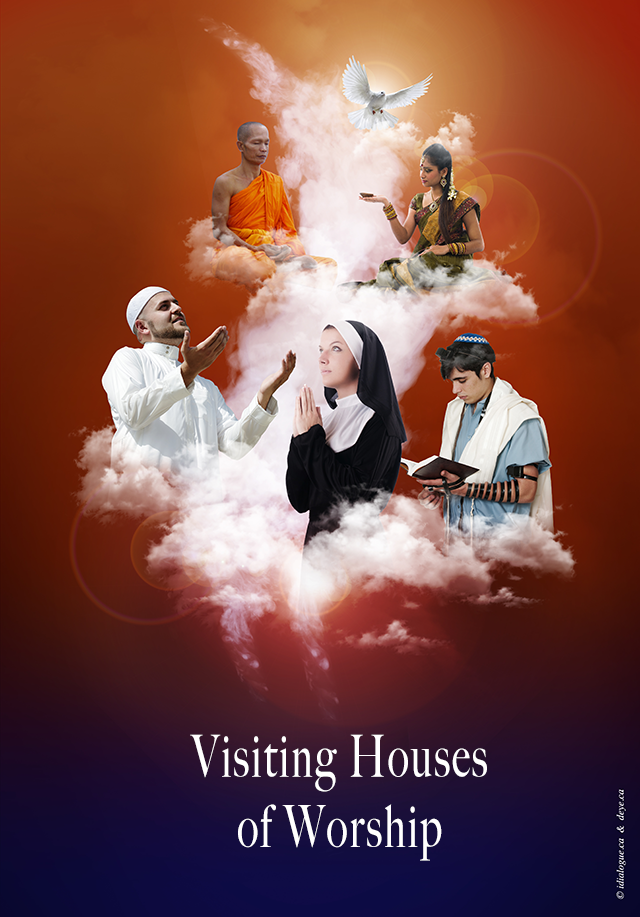Introduction
For the past 40 years, I have been visiting houses of worship in various North American cities. My visits to mosques, synagogues, gurdwaras, temples, meditation centers and churches have proved to be a wonderful complement to my many years of studying and teaching world religions.
One cannot really understand a faith tradition without entering into some kind of experience of that tradition. A house of worship site visit allows for just such an experience.
Inside the house of worship, one experiences the tastes, sounds, sights and smells of a faith tradition and its heritage. Here one encounters the tradition’s unique culture – its music, its prayer, its beliefs, its practices, its foods, its rituals, its people. One of the benefits of such visits is that not only does one learn more about another faith tradition but one also learns about oneself and about one’s own religious tradition.
Because visiting houses of worship was so meaningful and helpful to me, I decided it would be a good idea to share this experience with others. In 1994, I began organizing group visits to houses of worship in Toronto, Canada. Since then, I have organized literally hundreds of such tours.
In recent years it occurred to me that it might be helpful for others if I further shared my experience by developing a set of guidelines for arranging houses of worship site visits. I felt this could be helpful for people not just in North America but also in other parts of the world.
Because more and more regions of the world are becoming environments of multiculture and multifaith, there is now occurring a meeting of religions, an encounter of religions that is patently new to history. Religious pluralism and interfaith dialogue constitute the future of religion. The growing demand for visits to houses of worship is part of this planet-wide phenomenon of interreligious encounter.
It is my hope that the guidelines outlined below will be helpful to all who want to organize site visits to houses of worship. There are variety of audiences that show interest in site visits – high school classes, university classes, continuing education classes, congregations of any given faith tradition.
There are a number of schedule models for site visits. On a given day, the visiting group may wish to visit only one house of worship; on the other hand, it is possible for the group to visit three or four sites in one day. Through the Encounter World Religions Center in Guelph, Ontario, Canada, we sponsor an annual week-long world religions program in which the student group visits fifteen houses of worship.
Efforts to prepare the visitors prior to the site visit are essential. Preparation needs to occur on two levels: 1) visitors should receive some general introductory information about the faith tradition they are visiting; 2) visitors should receive an orientation to the etiquette of the particular house of worship – this will enable them, as guests, to be sensitive to the cultural and religious sensibilities of the given tradition.

